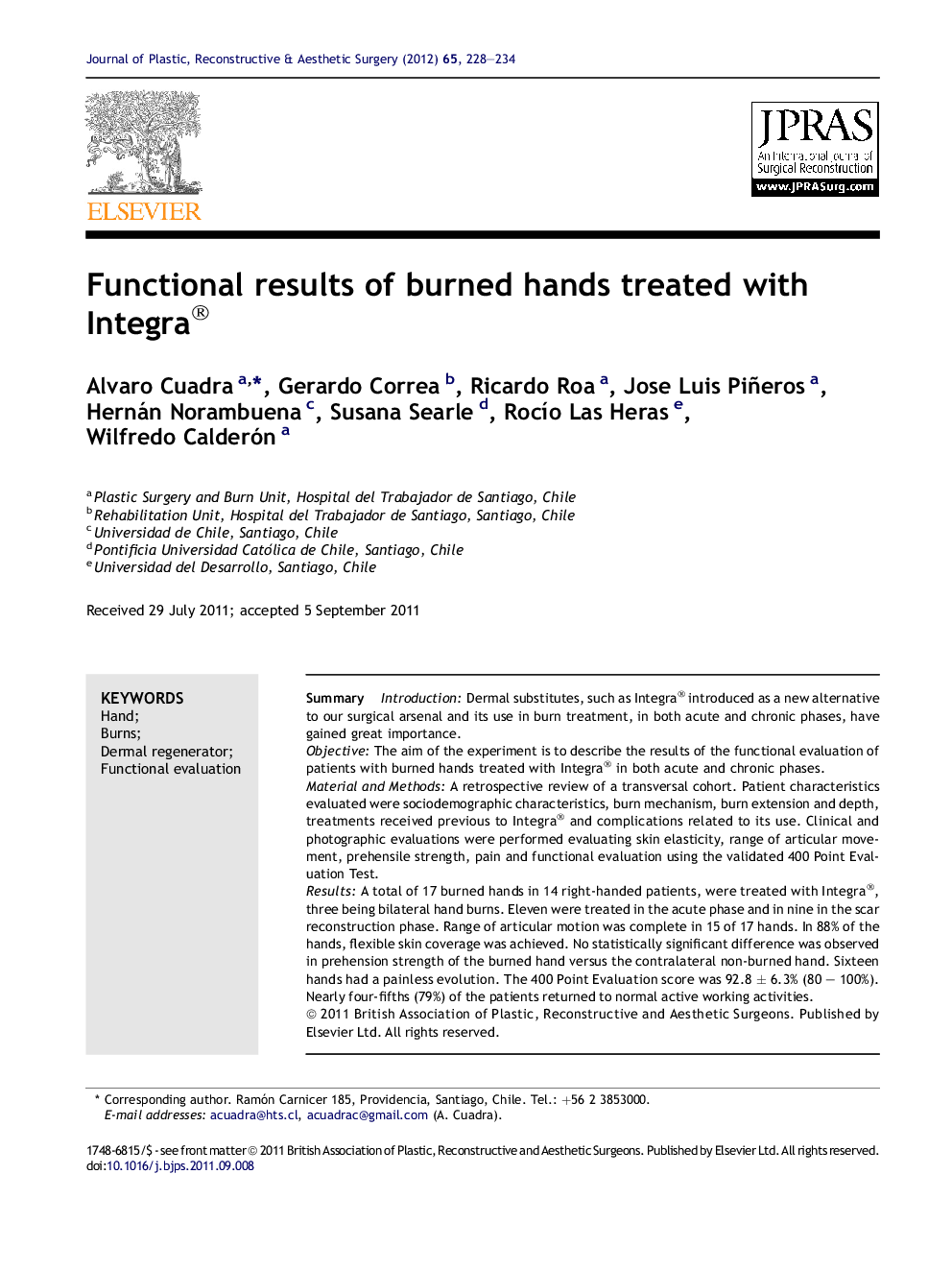| Article ID | Journal | Published Year | Pages | File Type |
|---|---|---|---|---|
| 4118685 | Journal of Plastic, Reconstructive & Aesthetic Surgery | 2012 | 7 Pages |
SummaryIntroductionDermal substitutes, such as Integra® introduced as a new alternative to our surgical arsenal and its use in burn treatment, in both acute and chronic phases, have gained great importance.ObjectiveThe aim of the experiment is to describe the results of the functional evaluation of patients with burned hands treated with Integra® in both acute and chronic phases.Material and MethodsA retrospective review of a transversal cohort. Patient characteristics evaluated were sociodemographic characteristics, burn mechanism, burn extension and depth, treatments received previous to Integra® and complications related to its use. Clinical and photographic evaluations were performed evaluating skin elasticity, range of articular movement, prehensile strength, pain and functional evaluation using the validated 400 Point Evaluation Test.ResultsA total of 17 burned hands in 14 right-handed patients, were treated with Integra®, three being bilateral hand burns. Eleven were treated in the acute phase and in nine in the scar reconstruction phase. Range of articular motion was complete in 15 of 17 hands. In 88% of the hands, flexible skin coverage was achieved. No statistically significant difference was observed in prehension strength of the burned hand versus the contralateral non-burned hand. Sixteen hands had a painless evolution. The 400 Point Evaluation score was 92.8 ± 6.3% (80 – 100%). Nearly four-fifths (79%) of the patients returned to normal active working activities.
